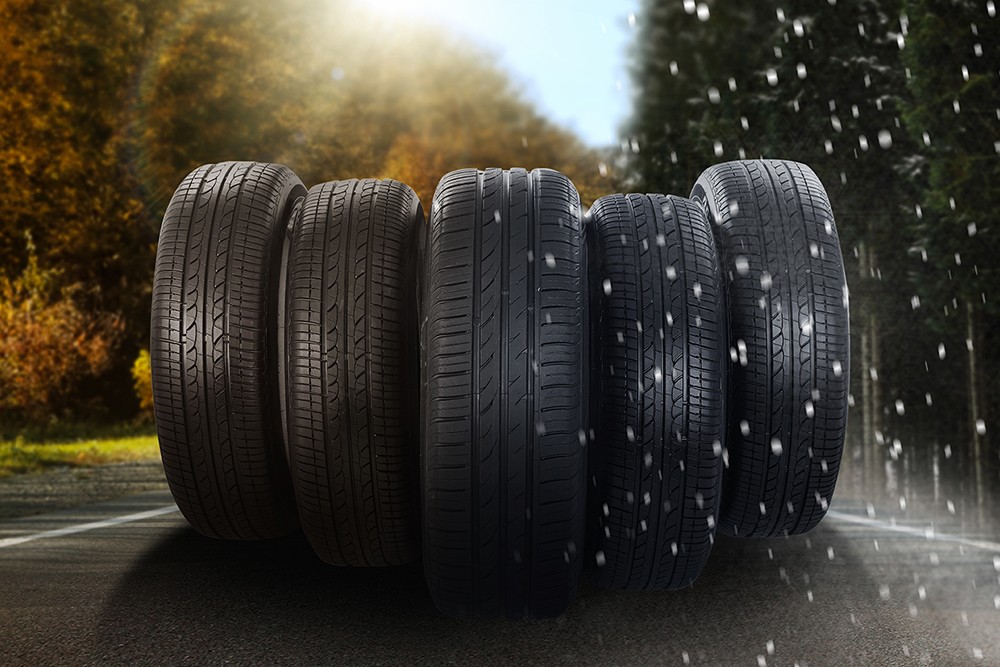10 Safety, Money-saving Tips for Tire Changeover Season

The autumn to-do list can get long in a hurry--driving kids to and from school, shuttling between sporting events, prepping your house for winter, making preparations for autumn festivities.
Tire changeover season has arrived.
Keep your family safe as dropping temperatures turn daily routes into slippery roads. According Shift To Winter Driving Safety Alliance, a group of Canadian agencies and companies, drivers should change over to winter treads whenever nighttime temperatures dip below 7 degrees C.
Temperatures lower than 7 degrees C cause the rubber compounds in all-season tires to harden. Stiff tires extend braking distances in cold, wet and snowy conditions.
The alliance also recommends installing four winter tires at the same time, not two. Mixing and matching types of tires can affect steering control and vehicle stability.
As an example, vehicles with two winter tires on the front axle tend to oversteer and cause the back end of the vehicle to lose traction. In contrast, vehicles with two winter tires on the rear wheels tend to understeer and cause the front end of the vehicle to lose traction.
Proper tire care can extend the life of your tires and help improve driving stability this winter. The Winter Driving Safety Alliance and tire manufacturers provide the following tips on selection and storing winter tires:
- Do you live in an area of heavy snowfall? Consider snow tires rated for severe weather even if you don’t plan on using your vehicle outside of city limits.
- Familiarize yourself with local requirements before going on autumn and winter excursions. Winter treads must be labeled with the Three-Peak Mountain Snowflake symbol (3PMS) or “M” and “S” symbols to designate “mud and snow.”
- Can tires marked with an "M + S" (mud plus snow) be used on winter roads? Yes, tires bearing “M+S” can provide safe all-weather performance, but they may not be intended for severe snow conditions.
- Do not use wide, high performance tires unless they are specifically designed as snow tires.
- Install four winter tires, never two. Replacing only the front or only the rear tires can cause steering control and stability problems in icy conditions.
- Avoid mixing tires with different tread patterns, size and internal construction. Driving on different types of treads affects vehicle grip and instability.
- Replace tires worn down to the tread wear indicators. Sometimes called tread bars, the thin vertical lines can be found at the bottom of the main tread channels. Wear indicators show the legal limit of tread and the marks indicate tires which have lost their ability to grip on snow-covered roads or in severe weather conditions.
- Extend the life of your winter tires and reduce fuel consumption by checking inflation every month. Remember, tire pressure decreases as temperature drops, and tires naturally lose air from rim seepage. Measurements should be taken on cold tires such as a vehicle that has been sitting outside overnight.
- Not sure about the size of tire needed for your vehicle? Size, load capacity and speed rating are determined by the manufacturer. You can find it on the tire itself and also on edge of the driver’s door or door frame on the driver’s side.
- Prevent tire deterioration during storage. Stow your replaced tires in a safe, clean location. Place them upright, indoors. Avoid direct sunlight and strong artificial light. Keep them away from locations with heat sources, hydrocarbons and ozone (electrical motors). For tires stored on their rims, reduce pressure to 15 PSI to help prevent cracking and deformation during storage.
Go to the following for more information about winter tires and winter driving:
Driving In Canada - Winter Tire Safety Tips
Shift Into Winter tips (Canada video)
Driving in US - Winter Tire Safety Tips
Winter Driving Tips - National Oceanic and Atmospheric Administration (video)